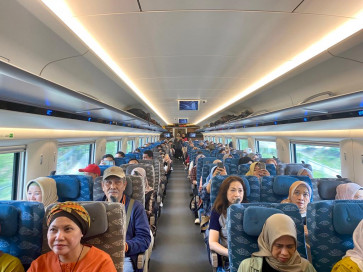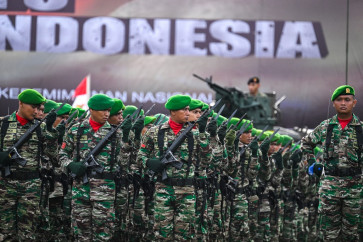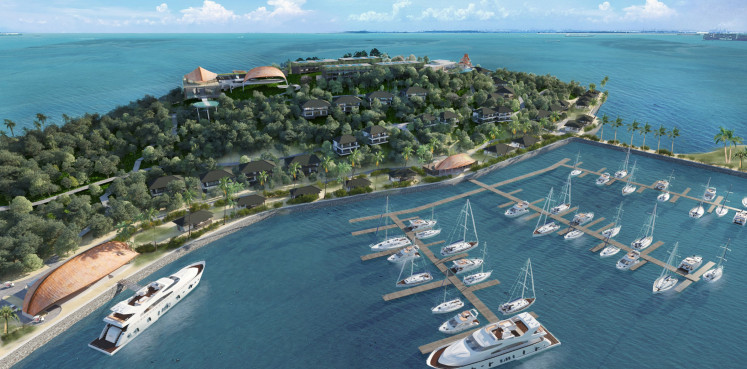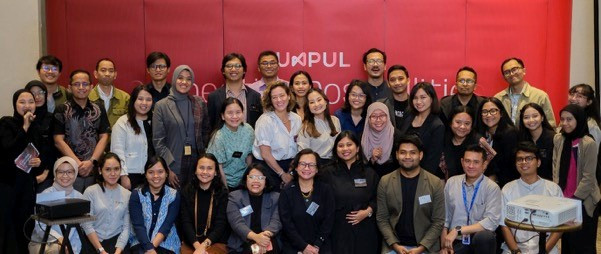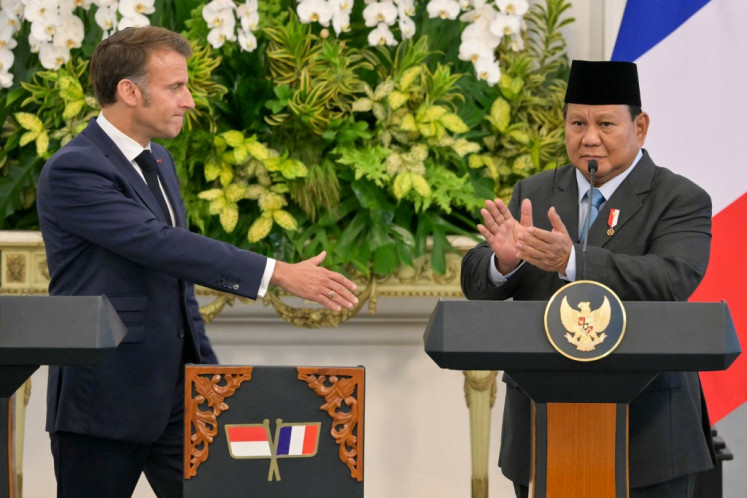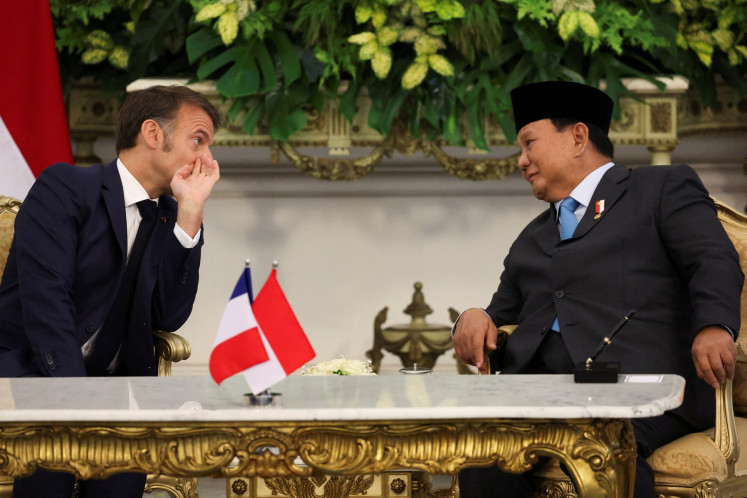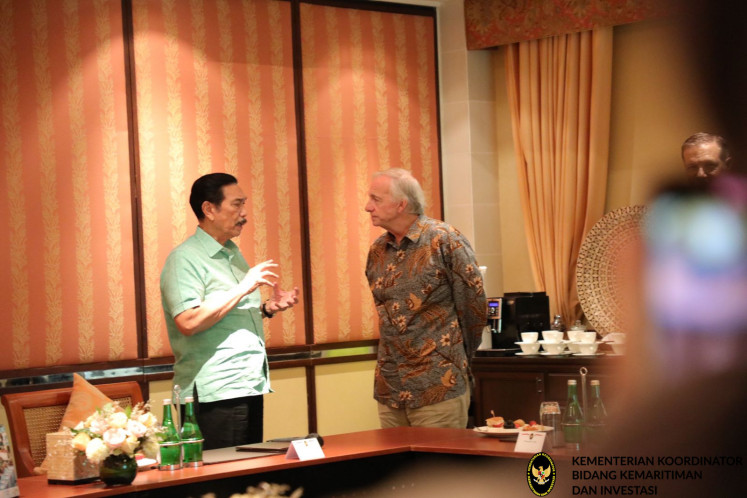Pertamina takes active part in turning to clean energy
Change text size
Gift Premium Articles
to Anyone
 Pertamina’s implementation of the 30 percent biodiesel (B30) program is predicted to absorb 8.38 million kiloliters of domestic fatty acid methyl ester (FAME) in 2020, up from 5.5 million kiloliters in 2019. (Courtesy of Pertamina)
Pertamina’s implementation of the 30 percent biodiesel (B30) program is predicted to absorb 8.38 million kiloliters of domestic fatty acid methyl ester (FAME) in 2020, up from 5.5 million kiloliters in 2019. (Courtesy of Pertamina)
I
ndonesia is on its way to turning to clean and green energy through massive low-carbon development in response to the global threat of climate change, with state-owned oil and gas giant Pertamina taking an active part in the direction.
Hery Harudin, vice president of the Pertamina Energy Institute, which discussed the Pertamina Energy Outlook in a webinar themed Energizing the Energy Transition organized by Pertamina in Jakarta on Tuesday, said the transition of primary energy from fossil energy to new and renewable energy (NRE) was closely related to electricity because the primary energy was largely consumed by power plants.
By taking the transition of energy into account, the primary energy that can become the input of power plants will increase to up to 64 percent in the Green Transition (GT) scenario by 2050.
“The primary NRE as an input for power plants has a minimum portion of 80 percent of the NRE,” he said.
Biofuel is still utilized to increase the portion of NRE despite the insignificant portion, he said.
With regard to gas, he said that the gas consumed for transportation, household, industry and power plans, as part of the energy transition, was in parallel with the development of NRE.
“The portion of gas for transportation is predicted to remain minimal up to 2050, given that transportation is increasingly leaning toward electrification,” Hery said.
Transportation and industries are the biggest consumers, with a minimum portion of 60 percent of the total final energy consumption.
“In 2019, the consumption of oil fuel [BBM] as a primary energy source reached 45 percent but will decline due to the disruptions arising from the energy transition, including biofuel and electricity.”
The utilization of electricity is projected to increase from 23 million metric tons of oil equivalent (MTOE) in 2019 to 90 MTOE in 2050 under the GT scenario, which is aligned with the increase in the energy transition, he said.
“However, the consumption of coal will drop due to the gasification in the industry,” Hery said.
The renewable energy mix in Indonesia will potentially reach 29 percent under the market-driven scenario and 47 percent in the GT scenario by 2050.
The utilization of gas is also predicted to increase to between 18 percent and 20 percent of the total energy mix.
“Oil and coal will potentially decline in parallel with the energy transition,” Hery said.
“The emission decline in accordance with the NDC target requires NER to be at least 16 percent in 2030. The energy transition requires policy and regulatory support, so that the ecosystem can develop and the commercial aspect can be met. For example, improvements in the pricing of NRE-based electricity, fiscal and non-fiscal incentives and emission-related policy, such as carbon tax.
According to Hery, like other countries such as Japan, China, European Union countries and the Unites States, Indonesia will also develop battery-powered electric vehicles (EV), a rising global trend.
“The penetration of EVs will need the right ecosystem, coupled with supporting policies,” Hery said.
The webinar also featured speakers such as Arifin Rudiyanto, the deputy for maritime affairs and natural resources at the National Development Planning Ministry; Ernie D. Ginting, director of strategic planning and business development of Pertamina Power Indonesia (PPI); Ruandha Agung Sugardiman, director general of climate change at the Environment and Forestry Ministry; Vikas Halan, associate managing director at Moody’s investor service; Sim Hui Ting, analyst at Corporate Finance group and Moody’s; and Wan Tsiang Lam, directorate head of debt capital market for Southeast Asia MUFG.
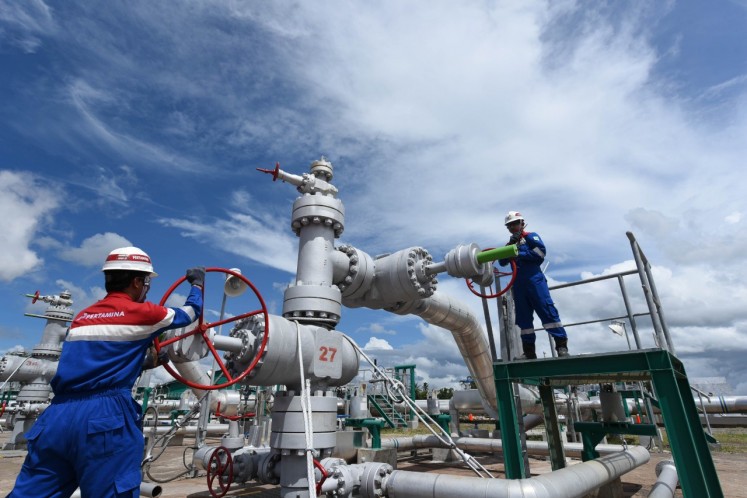
Discussing energy transition planning, Arifin said that by 2030, the energy sector, a major contributor to carbon emission, was predicted to produce 1.669 million tons of carbon dioxide equivalent (CO²e) of greenhouse gas (GHG) emission, an increase from 453.2 million tons of CO²e of GHG emission in 2010.
But with low carbon policy intervention, the energy sector’s contribution to GHG emission is expected to decline by 314 million tons of CO²e to 1.355 million tons of CO²e of GHG emission by 2030.
“Energy transition from fossil fuel to renewable energy would be a key strategy of our energy development,” Hery said.
Therefore, it is of importance to ensure that the “low carbon policies remain a priority in our economic recovery plan, becoming a way to transform our economy into a low carbon economy”.
Under the national medium-term development program (RPJMN) for 2020-2024, low-carbon development is prioritized for sustainable energy, waste management, blue carbon, the green industry and sustainable land restoration.
Hery highlighted the energy transition in the RPJMN, accelerating the renewable energy power plants, increasing biofuel supply, implementing energy efficiency and energy conservation, bioenergy development in stages through the production of biodiesel and green fuel as among the strategies that the government has set to tap the huge potential of energy resources in Indonesia.
Meanwhile, Ernie D. Ginting in her paper titled “NRE Development, Challenges and Opportunities”, said that to ensure Pertamina’s role in the energy transition and utilizing NRE potential in Indonesia, Pertamina established a PPI on June 13 as the lead of subholding Power & NRE, with a vision to lead Indonesia’s energy transition through innovative clean energy.
“Our mission is to lead the development of capacity in geothermal, gas and NRE power, battery manufacturing and storage for the sustainability, accessibility [connectivity] and mobility of clean energy in Indonesia and beyond,” she said.
She highlighted the power and NER value propositions that Pertamina offered, which include Pertamina as an agent of development, cost competitiveness, clean and green energy solution and strategic partnership.
As an agent of development, she said Pertamina would continue to build new energy infrastructure to support energy security and economic development, contribute to national strategic projects and develop areas to reduce inequality.
Clean energy solution
With respect to clean energy solution, she said: “Our power generation solutions are designed and tailored to serve each industry according to their expectation based on time, on budget and on schedule.”
She said that as part of Pertamina Group, “PPI has access to upstream and downstream resources and infrastructures to give you end-to-end energy solutions.”
She also hailed the strategic partnership as benefitting the company.
“Our experience in partnership or working with reputable local and international companies in the energy and finance sectors will provide benefits for the projects,” she said.
Under the energy transition agenda, PPI is currently engaged in developing geothermal power projects; B30 to D100; green refineries; NRE that include hydropower, solar, biomass, biogas, wind and biofuel; battery storage; and electric vehicles.
According to her, the power and NER portfolio in Indonesia could reach approximately 40 gigawatts of additional capacity, or about US$8 billion in revenue, requiring investments of approximately $15 billion until 2026.
Indonesia is still facing tough challenges in developing NRE, which commonly arise from the issue of commercialization, land and financing.
“When it comes to commercialization, for example, the tariff is lower than the national BPP1 or no more than 85 percent of the regional BPP1, while BPP1 prices are predominantly domestic coal-linked, making it challenging for solar to compete.
When it comes to the application of decarbonization in the energy sector, Ruandha said that Indonesia was focused on three pillars as part of its commitment to the Paris Agreement. They are energy efficiency measures that will drastically decrease the energy intensity of gross domestic product (energy per GDP) and decarbonization of electricity by using low carbon emitting fuels.
Carbon capture and storage (CCS) would significantly reduce electricity emission intensity (gCO2/kWh) and electrification will reduce fossil fuel combustion and emission, provided that the power generation is deeply decarbonized.
According to Ruandha, Pertamina has made progress with regard to decarbonization or emission reduction, with Pertamina Geothermal recording a decline in greenhouse gas in 2019 at 695.37 million tons of CO²e and PertaminaEP at 92.72 million tons of CO²e.
“The GHG emission decline has been achieved through several actions, such as energy efficiency, the utilization of gas flaring, fuel conversion and the use of modified equipment,” he said.
Pertamina has also taken other initiatives, including research in developing green refineries and also in building an EV battery plant. The company also has a refinery that can convert crude palm oil (CPO) into green energy.
“It process the CPO derivative products into petroleum in the Plaju refinery and CPO derivative products into diesel fuel in the Dumai refinery.”
Vikas Halan said that in the refining carbon transition assessment scorecard, Moody’s Investors Service weighs four components equally, which include the current low-carbon transition business profile, exposure to medium-term technology, policy and market risks, medium-term response activities and long-term exposure to rapid transitions.
“For exposure to medium-tern technology, carbon pricing policy and market growth and decline exposure are weighed by the market,” he pointed out.

